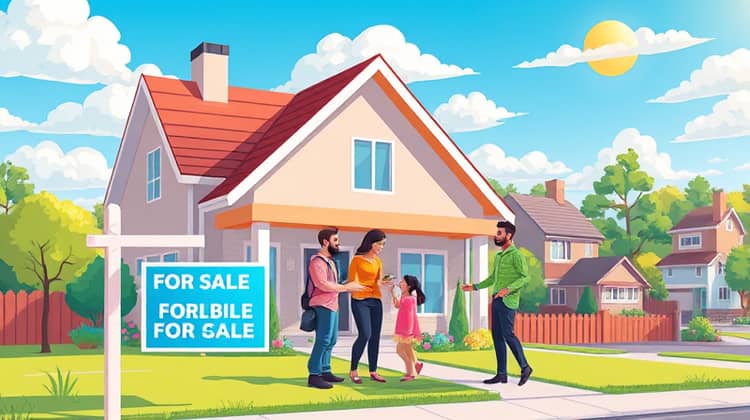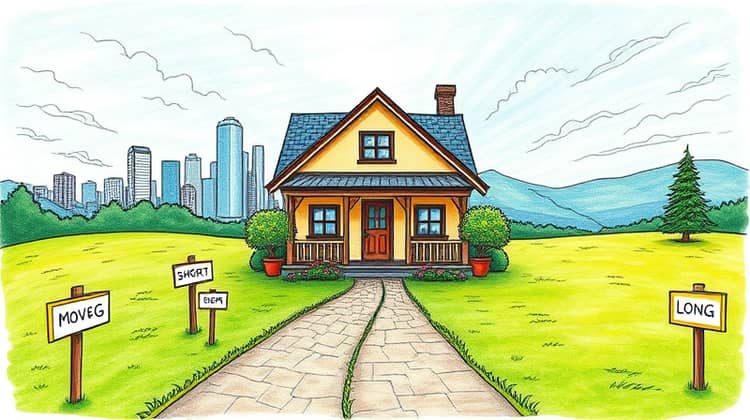Mortgage Dilemma: Fixed vs. Adjustable Rates - What You Need to Know

When it comes to buying a home, understanding mortgage rates is crucial for making informed decisions. Two primary types of rates dominate the market: fixed and adjustable. This article will explore the differences between these two types of mortgages and provide insights to help prospective homeowners navigate their options.
Fixed-rate mortgages offer stability and predictability, while adjustable-rate mortgages (ARMs) present opportunities for lower initial payments but carry the risk of future fluctuations. Knowing the advantages and disadvantages of each can significantly impact your financial future.
In this guide, we will delve into the specifics of fixed and adjustable-rate mortgages, examining their benefits and drawbacks, key factors to consider when choosing a mortgage, and strategies for selecting the right option based on your financial situation.
Understanding Mortgage Rates

Mortgage rates are primarily influenced by the prevailing economic conditions and the Federal Reserve's monetary policy. The rate you secure can affect not only your monthly payment but also the overall cost of your home loan over its lifespan. Understanding these rates is essential for both new buyers and homeowners looking to refinance.
Fixed-rate and adjustable-rate mortgages each serve different borrower needs and financial situations. It’s essential to grasp the fundamental concepts behind these rates to make an informed choice that aligns with your financial goals.
When evaluating your mortgage options, consider your personal financial situation, including how long you plan to stay in the home and your risk tolerance related to fluctuating interest rates.
Fixed-Rate Mortgages

Fixed-rate mortgages are straightforward and widely favored by homebuyers for their simplicity. With a fixed-rate mortgage, the interest rate remains constant throughout the life of the loan, providing predictable monthly payments and shielding homeowners from market fluctuations.
This type of mortgage is particularly appealing during periods of rising interest rates, as borrowers can lock in a low rate for the duration of the loan. However, securing a fixed-rate mortgage may come with slightly higher initial rates compared to adjustable-rate alternatives.
- Stable monthly payments for the duration of the loan
- Protection against rising interest rates
- Simplified budgeting as payments do not change
Given the stability fixed-rate mortgages provide, many buyers find comfort in knowing exactly how much they will pay each month. This predictability allows for better financial planning and helps avoid surprises that can arise with fluctuating payments.
Over time, the certainty of a fixed rate can contribute to a sense of security, especially for those who plan to stay in their home long-term. Additionally, when rates rise, those with fixed-rate mortgages benefit significantly from their locked-in lower rates.
Pros of Fixed-Rate Mortgages
As the fixed-rate mortgage guarantees consistent monthly payments, borrowers can easily incorporate these fixed costs into their monthly budgets and financial planning. This consistency can be especially advantageous for families planning long-term expenses.
The peace of mind that comes with not having to worry about future interest rate increases is another sizable benefit, allowing homeowners to focus on other financial goals.
- Predictability in budgeting and expenses
- Protection from interest rate hikes
- Easier long-term financial planning
In conclusion, the pros of fixed-rate mortgages make them a considerable option for many homebuyers, particularly for those who value stability and simplicity in their financial obligations.
Cons of Fixed-Rate Mortgages
Fixed-rate mortgages do have some disadvantages worth noting. One of the main downsides is that they often come with higher initial interest rates compared to adjustable-rate loans. This can make them less attractive for borrowers seeking lower monthly payments at the outset.
Additionally, if interest rates decline, those with fixed-rate mortgages will miss out on the opportunity to benefit from lower rates unless they refinance, incurring additional costs and complexities.
- Higher initial rates compared to ARMs
- Less flexibility if rates drop
- Potentially higher overall costs if refinancing is needed
These cons highlight the importance of considering your financial situation and market conditions before committing to a fixed-rate mortgage.
Adjustable-Rate Mortgages (ARMs)

Adjustable-rate mortgages, often referred to as ARMs, provide a different approach to home financing. Unlike fixed-rate mortgages, ARMs have interest rates that fluctuate periodically based on market conditions, which can result in lower initial payments.
The initial rate on an ARM is typically lower than that of a fixed-rate mortgage, making it appealing to many buyers. However, the potential for increasing rates over time presents a significant risk that borrowers need to consider before choosing this option.
- Lower initial interest payments
- Flexibility that could result in lower costs if rates remain stable
- Potentially easier to qualify for compared to fixed-rate mortgages
Despite the initial benefits, the nature of ARMs introduces uncertainty regarding future payments, which can complicate budgeting and financial planning. Borrowers need to be acutely aware of the specifics of their ARM, including how frequently the rate adjusts and the caps on increases.
For those who expect to move or refinance within a few years, ARMs can be an attractive choice. However, long-term uncertainty can create challenges if market conditions suddenly change, leading to higher payments than initially anticipated.
Pros of Adjustable-Rate Mortgages
The immediate benefit of an adjustable-rate mortgage is the lower initial interest rate, which allows borrowers to save money in the early years of the mortgage. For many, this lower payment can significantly ease the transition into homeownership.
Additionally, ARMs may be easier to qualify for compared to fixed-rate options, due to their initial lower payment structure which can attract buyers working within tighter budgetary constraints.
- Lower initial payments than fixed-rate mortgages
- Potential savings if you move or refinance before rate adjustments
- Generally accessible to a broader range of borrowers
In summary, the pros of adjustable-rate mortgages make them an attractive option for buyers prepared to navigate the market's potential fluctuations.
Cons of Adjustable-Rate Mortgages
The primary concern with ARMs arises from their inherent unpredictability. Borrowers can find their monthly payments increasing significantly once the fixed period ends or if interest rates rise, which can strain budgets.
This unpredictability can be especially challenging for those who plan to stay in their homes long-term, making budgeting more complex and potentially leading to unmanageable financial obligations in the future.
- Uncertainty in future payments
- Risk of payment increases beyond budget
- Complexity in understanding loan terms and market conditions
These cons illustrate the importance of thoroughly understanding the terms of an ARM and assessing personal financial stability before choosing this mortgage type.
Factors to Consider

When deciding between a fixed-rate and an adjustable-rate mortgage, several factors come into play. A crucial aspect is how long you plan to stay in your home. If you intend to move within a few years, an ARM might be more beneficial due to its lower initial rates. However, if you're looking to settle for the long haul, a fixed-rate may be more prudent.
Another vital consideration is your risk tolerance regarding fluctuating interest rates. If market volatility causes anxiety, you may prefer the stability of a fixed-rate mortgage.
- Length of time you plan to stay in your home
- Your current financial stability
- Expectations for future interest rates
- Personal comfort with financial risk
Taking these factors into account will help you tailor your mortgage choice to your individual circumstances and financial goals.
Making the Right Choice

Ultimately, the decision between fixed and adjustable-rate mortgages boils down to your unique financial situation and future plans. It is advisable to assess current market trends, your expected time in the home, and your financial resilience against interest rate hikes. Additionally, speaking with a mortgage advisor can provide personalized insights and guidance.
Keep in mind that the right mortgage for you today might not be the same a few years down the line. Regularly reviewing your financial situation and market conditions will empower you to make informed decisions, whether you choose to stick with your current mortgage or consider refinancing down the road.
Understanding the pros and cons of each option can lead you to a more satisfying and financially sound decision for your homeownership journey.






